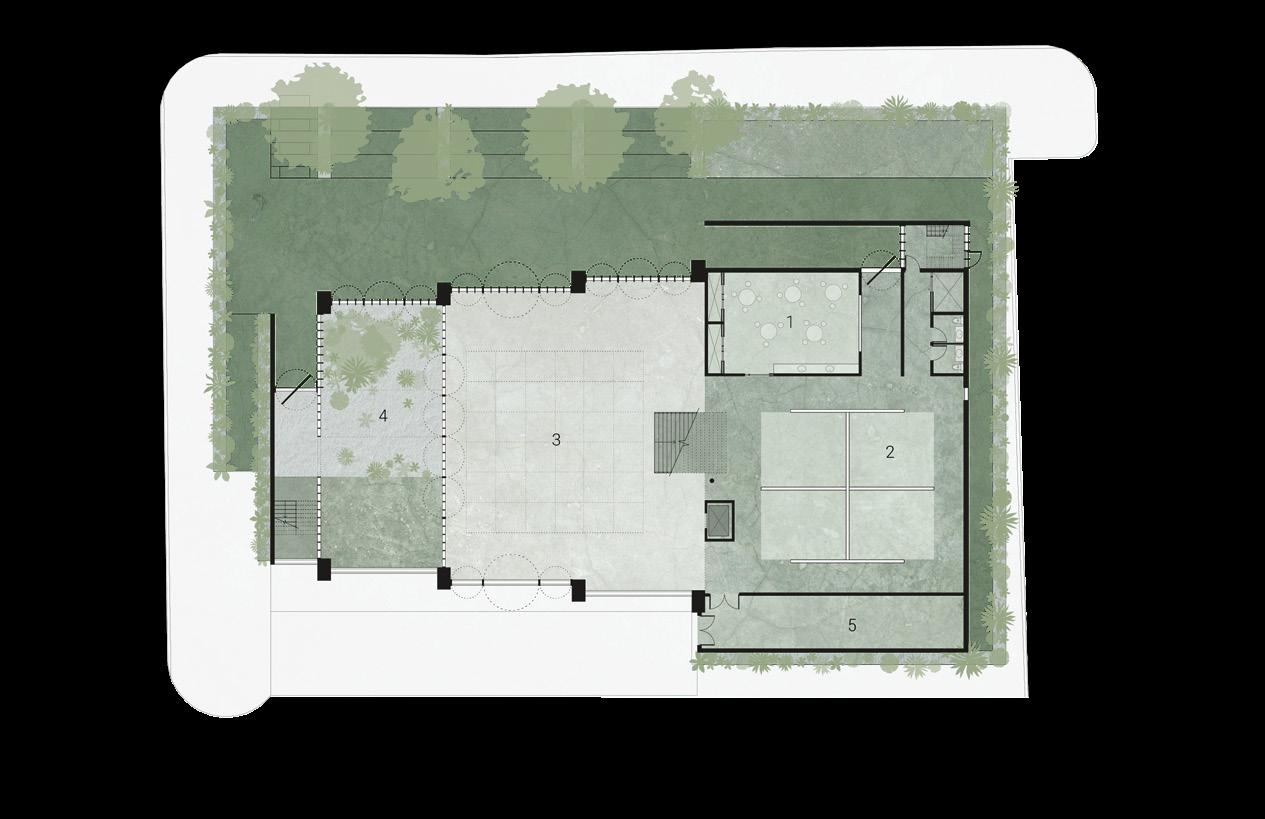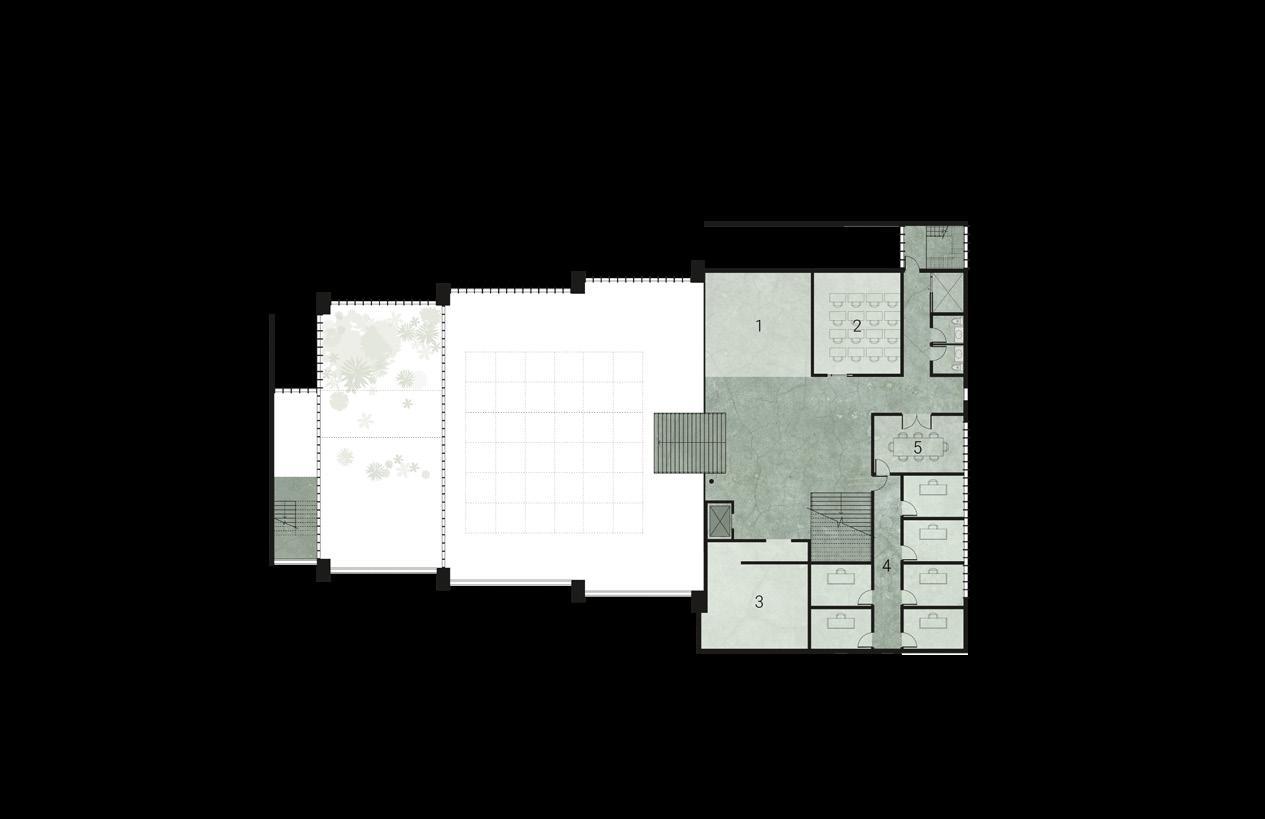
2 minute read
Meriel Vogliotti
Meriel Vogliotti
MoCA Adaptive Reuse


MoCA Tucson has been continuously breaking down the mold of the rigid art institution since it was established in 1997 by a group of artists. The museum looks to cultivate connection and innovation in the local community by providing a welcoming and inviting space for visitors to not only learn about the changing world we live in, but to also be active participants in its change. This adaptive reuse proposal of Tucson’s Museum of Contemporary Art aims to preserve the buildings historical past as a fire station while proposing an adaptive design that can better respond to the changing needs of the museum’s programs and rotating galleries. This project considers the institutions role and significance within the local community as a locus of creation and explores how its architecture can further cultivate its vibrant and diverse maker culture.
The building’s exterior aims to communicate transparency and openness to the city of Tucson in several ways. The garage doors, which open fully, can serve as an invitation for the public to engage with the works and ideas housed inside. The building gently meets the sidewalk with long steps to provide pedestrians with an opportunity to rest and interact with the space while a raised platform at the entrance acts as a stage to host events for the museum or for spontaneous performances by local artists. Past the garage doors is the main gallery space, which features a track ceiling grid that allows for an increased level of flexibility in scale for all types of exhibitions. An ecological gallery adapts a third of the fire station garage to serve as a sculpture garden and as a permanent exhibition of Tucson’s desert flora. This is an intermediate space between interior and exterior that affords visitors with new ways of experiencing art and Nature. A suspended walkway above the ecological gallery connects the space to the Artist in Residence and café area on the third floor. Here, the living and studio spaces of artists coexist with the community to spur dialogue and to foster empathy between artists and audiences.
The Museum of Contemporary Art is a vibrant hub of culture and ideas that advocates for inclusion, unconventional ways of being, and diversity in community. The many unconventional spaces found throughout the building’s new architecture provide the necessary opportunities for dialogue and creative interaction between individuals of different backgrounds within the city of Tucson. This new vision aligns with the museums core mission to inspire new ways of thinking through the cultivation, exhibition and interpretation of contemporary art and has the potential to provide new perspectives and help bridge the gap between the making of art the public. It is the ideas that come from the making of art and the community that bring life to the space and the city.

















